Art Into Life
Collector Wolfgang Hahn and the 60s
24 Jun - 24 Sep 2017

Installation view "Art into Life! Collector Wolfgang Hahn and the 60s", Museum Ludwig, Cologne 2017, Photo: Rheinisches Bildarchiv Köln/ Cologne, Britta Schlier

Installation view "Art into Life! Collector Wolfgang Hahn and the 60s", Museum Ludwig, Cologne 2017, Photo: Rheinisches Bildarchiv Köln/ Cologne, Britta Schlier
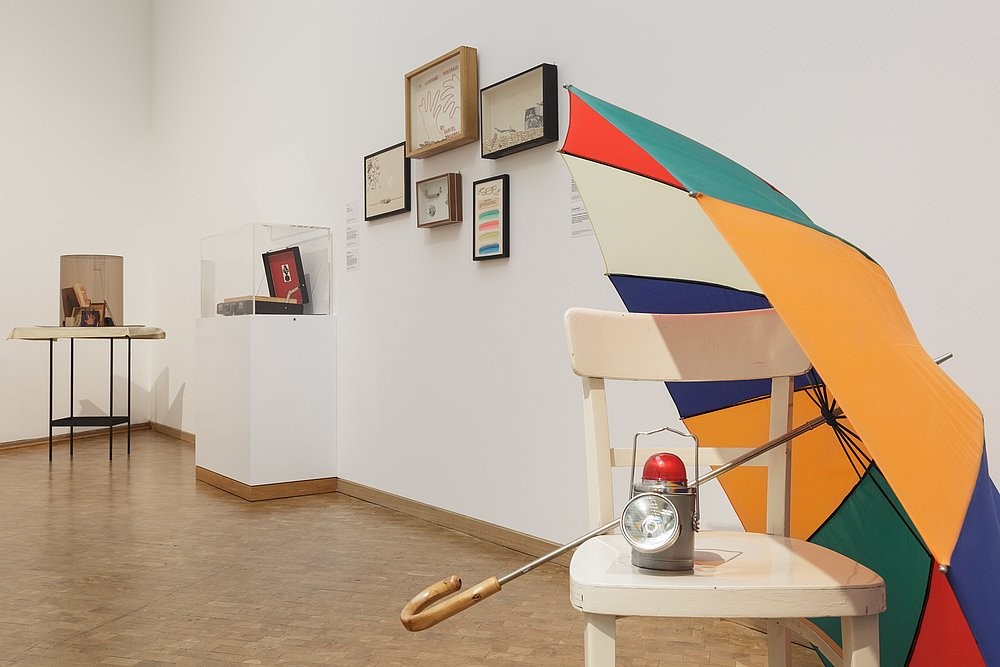
Installation view "Art into Life! Collector Wolfgang Hahn and the 60s", Museum Ludwig, Cologne 2017, Photo: Rheinisches Bildarchiv Köln/ Cologne, Britta Schlier
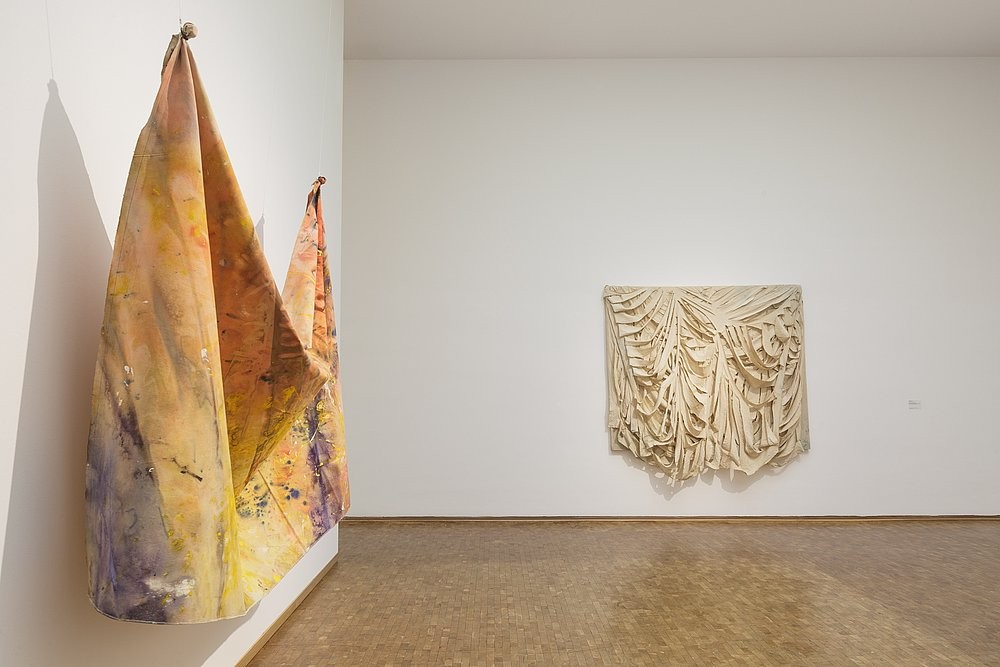
Installation view "Art into Life! Collector Wolfgang Hahn and the 60s", Museum Ludwig, Cologne 2017, Photo: Rheinisches Bildarchiv Köln/ Cologne, Britta Schlier
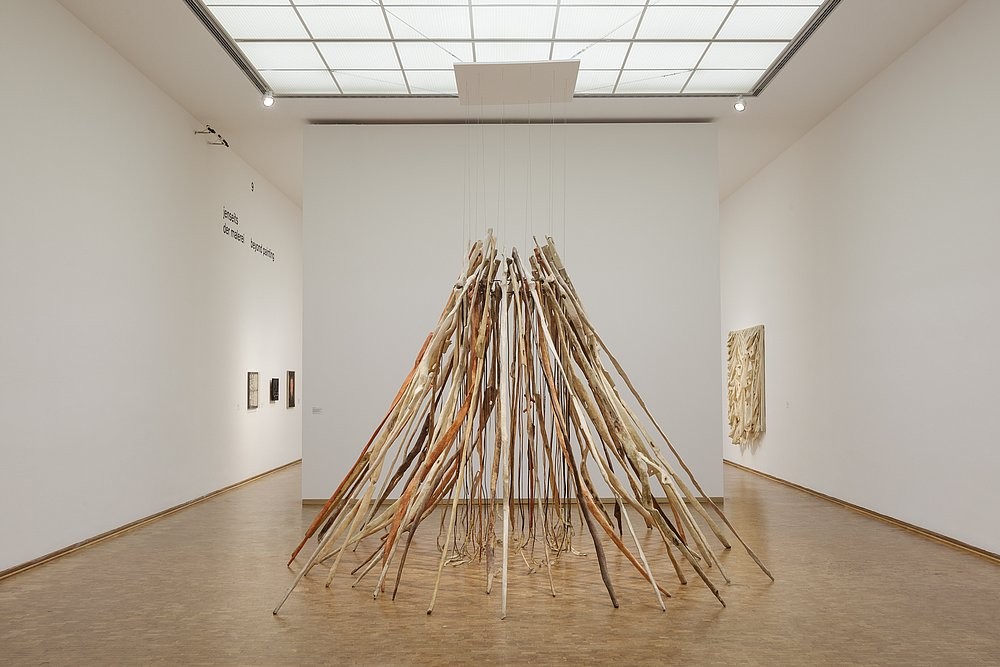
Installation view "Art into Life! Collector Wolfgang Hahn and the 60s", Museum Ludwig, Cologne 2017, Photo: Rheinisches Bildarchiv Köln/ Cologne, Britta Schlier
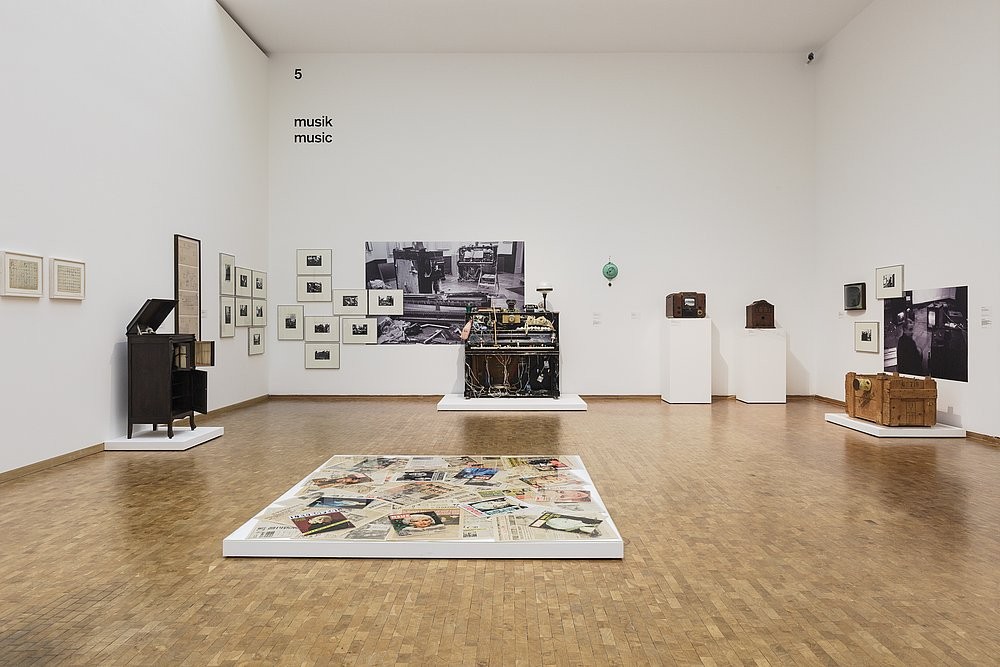
Installation view "Art into Life! Collector Wolfgang Hahn and the 60s", Museum Ludwig, Cologne 2017, Photo: Rheinisches Bildarchiv Köln/ Cologne, Britta Schlier

Installation view "Art into Life! Collector Wolfgang Hahn and the 60s", Museum Ludwig, Cologne 2017, Photo: Rheinisches Bildarchiv Köln/ Cologne, Britta Schlier
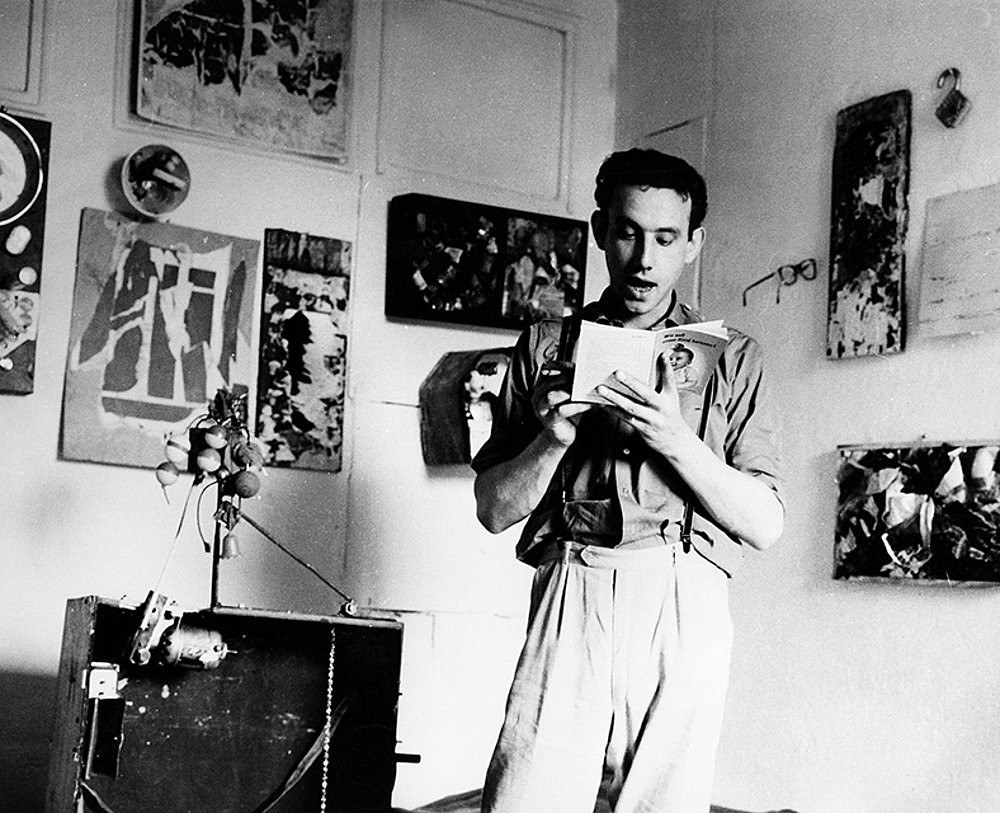
Daniel Spoerri führt den Koffer vor (Daniel Spoerri Presents the Suitcase), 1961, © VG Bild-Kunst, Bonn 2017 und mumok, Museum moderner Kunst Stiftung Ludwig Wien, former Hahn Collection, Cologne, Photo: Vera Mercer
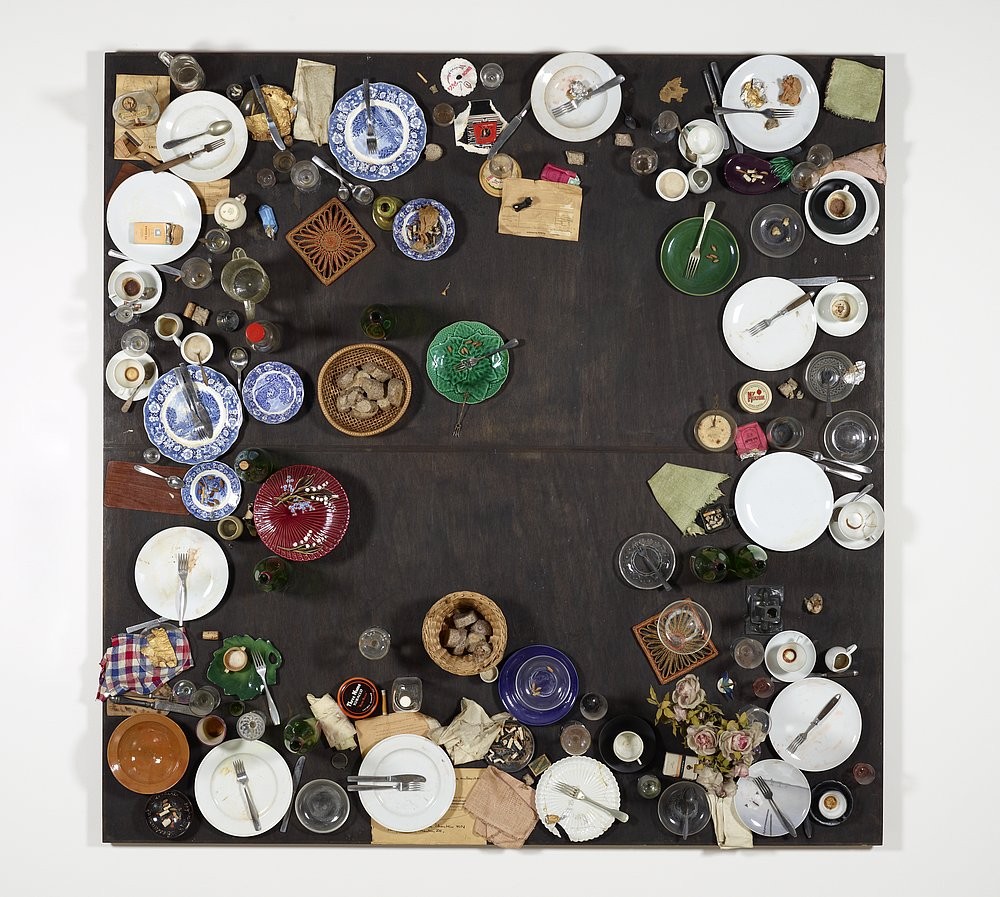
Daniel Spoerri, Hahns Abendmahl (Hahn’s Supper), 1964, © VG Bild-Kunst, Bonn 2017, Photo: mumok, Museum moderner Kunst Stiftung Ludwig Wien, former Hahn Collection, Cologne
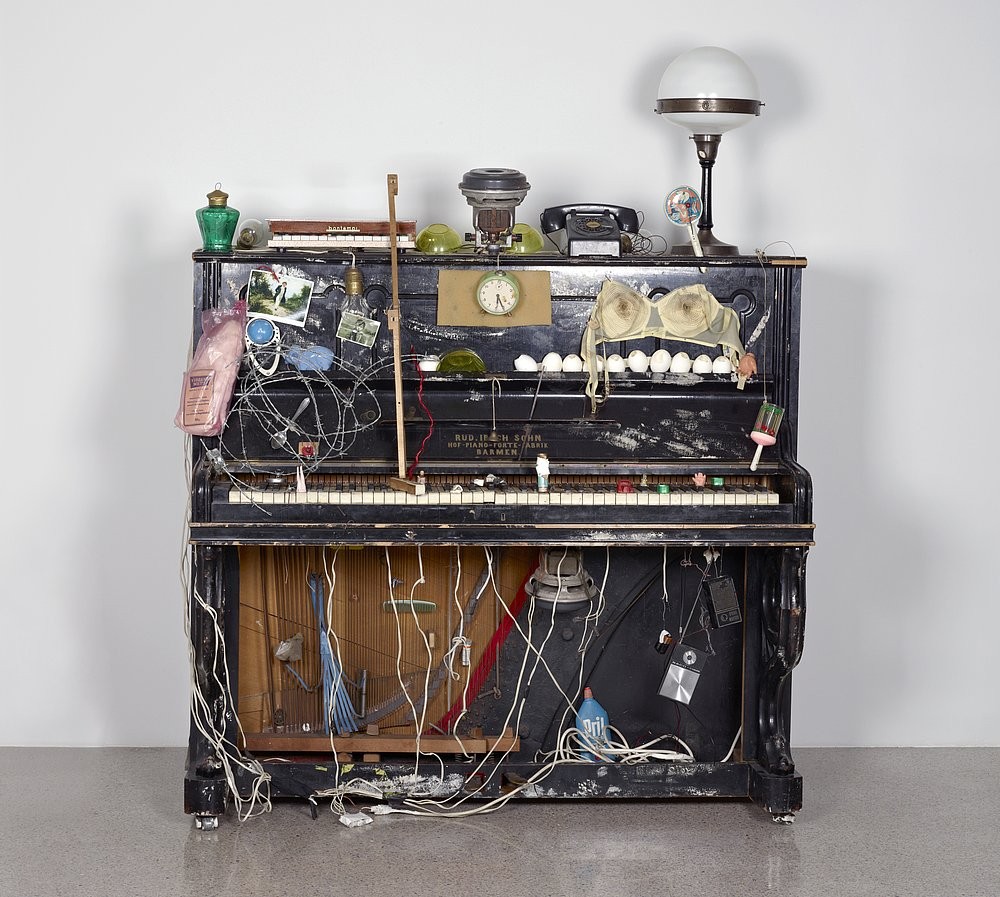
Nam June Paik, Klavier Intégral, 1958-1963, © Nam June Paik Estate, Foto: mumok, Museum moderner Kunst Stiftung Ludwig Wien, ehemals Sammlung Hahn, Köln
ART INTO LIFE
Collector Wolfgang Hahn and the 60s
24 June – 24 September 2017
In the 1960s, the Rhineland was an important center for a revolutionary occurrence in art: a new generation of artists with international networks rebelled against traditional art. They used everyday life as their source of inspiration and everyday objects as their material. They went out into their urban surroundings, challenging the limits of the art disciplines and collaborating with musicians, writers, filmmakers, and dancers. In touch with the latest trends of this exciting period, the Cologne painting restorer Wolfgang Hahn (1924–1987) began acquiring this new art and created a multifaceted collection of works of Nouveau Réalisme, Fluxus, Happening, Pop Art, and Conceptual Art.
Wolfgang Hahn was head of the conservation department at the Wallraf Richartz Museum and the Museum Ludwig. This perspective influenced his view of contemporary art. He realized that the new art from around 1960 was quintessentially processual and performative, and from the very beginning he visited the events of new music, Fluxus events, and Happenings. He initiated works such as Daniel Spoerri’s Hahns Abendmahl (Hahn’s Supper) of 1964, implemented Lawrence Weiner’s concept A SQUARE REMOVAL FROM A RUG IN USE of 1969 in his living room, and not only purchased concepts and scores from artists, but also video works and 16mm films.
On the other hand, he encountered contemporary art with a keen sense of history. As a witness of events and Happenings, he documented what he saw by conducting artist interviews to learn more about the creation of the works and their artistic position; he also purposefully collected works and documents from specific Happening contexts. This is how he came into possession of a great number of objects from Nam June Paik’s legendary exhibition Exposition of Music: Electronic Television of 1963.
The Hahn Collection was acquired by the Republic of Austria in 1978 and was augmented with other acquisitions in 2003. It is part of the mumok – Museum moderner Kunst Stiftung Ludwig Wien in Vienna. The exhibition at the Museum Ludwig and the mumok considers the Hahn Collection for the first time as a self-contained time capsule that offers a fresh look at the art of the 1960s and ’70s beyond art-historical or geographical categories.
Artists
Anouj, Arman, Ay-O, Joseph Beuys, George Brecht, Michael Buthe, John Cage, John Chamberlain, Christo, Bruce Conner, Philip Corner, Merce Cunningham, Gérard Deschamps, Jim Dine, François Dufrêne, Öyvind Fahlström, Robert Filliou, Sam Gilliam, Ludwig Gosewitz, Nancy Graves, Raymond Hains, Al Hansen, Dick Higgins, Allan Kaprow / Kasia Fudakowski, Alison Knowles, Arthur Køpcke, Gary Kuehn, Yayoi Kusama, Barry Le Va, Boris Lurie, Gordon Matta-Clark, Claes Oldenburg, Yoko Ono, Nam June Paik, Lil Picard, Klaus Rinke, Mimmo Rotella, Dieter Roth, Niki de Saint Phalle, Günter Saree, George Segal, Daniel Spoerri, Paul Thek, Jean Tinguely, Ursula, Franz Erhard Walther, Robert Watts, Lawrence Weiner, H.C. Westermann, Stefan Wewerka, Jacques de la Villeglé, Wolf Vostell, Gil J. Wolman.
Kasia Fudakowski was invited to reinvent Push and Pull (1963) by Allan Kaprow. She will present Push and Pull – Re-Invented as a new work.
An exhibition by the Museum Ludwig in cooperation with the mumok – Museum moderner Kunst Stiftung Ludwig Wien, curated by Barbara Engelbach (Museum Ludwig) and Susanne Neuburger (mumok). The exhibition at the Museum Ludwig was curated by Barbara Engelbach.
The exhibition will be on view at the mumok in Vienna starting November 10, 2017.
The exhibition received generous support from the Peter and Irene Ludwig Foundation, the Kunststiftung NRW, and the Landschaftsverband Rheinland as well as additional funding from the Sparkasse KölnBonn from the lottery (PS Sparen und Gewinnen) of the Rheinischer Sparkassen- und Giroverband and the Gesellschaft für Moderne Kunst am Museum Ludwig e.V..
Collector Wolfgang Hahn and the 60s
24 June – 24 September 2017
In the 1960s, the Rhineland was an important center for a revolutionary occurrence in art: a new generation of artists with international networks rebelled against traditional art. They used everyday life as their source of inspiration and everyday objects as their material. They went out into their urban surroundings, challenging the limits of the art disciplines and collaborating with musicians, writers, filmmakers, and dancers. In touch with the latest trends of this exciting period, the Cologne painting restorer Wolfgang Hahn (1924–1987) began acquiring this new art and created a multifaceted collection of works of Nouveau Réalisme, Fluxus, Happening, Pop Art, and Conceptual Art.
Wolfgang Hahn was head of the conservation department at the Wallraf Richartz Museum and the Museum Ludwig. This perspective influenced his view of contemporary art. He realized that the new art from around 1960 was quintessentially processual and performative, and from the very beginning he visited the events of new music, Fluxus events, and Happenings. He initiated works such as Daniel Spoerri’s Hahns Abendmahl (Hahn’s Supper) of 1964, implemented Lawrence Weiner’s concept A SQUARE REMOVAL FROM A RUG IN USE of 1969 in his living room, and not only purchased concepts and scores from artists, but also video works and 16mm films.
On the other hand, he encountered contemporary art with a keen sense of history. As a witness of events and Happenings, he documented what he saw by conducting artist interviews to learn more about the creation of the works and their artistic position; he also purposefully collected works and documents from specific Happening contexts. This is how he came into possession of a great number of objects from Nam June Paik’s legendary exhibition Exposition of Music: Electronic Television of 1963.
The Hahn Collection was acquired by the Republic of Austria in 1978 and was augmented with other acquisitions in 2003. It is part of the mumok – Museum moderner Kunst Stiftung Ludwig Wien in Vienna. The exhibition at the Museum Ludwig and the mumok considers the Hahn Collection for the first time as a self-contained time capsule that offers a fresh look at the art of the 1960s and ’70s beyond art-historical or geographical categories.
Artists
Anouj, Arman, Ay-O, Joseph Beuys, George Brecht, Michael Buthe, John Cage, John Chamberlain, Christo, Bruce Conner, Philip Corner, Merce Cunningham, Gérard Deschamps, Jim Dine, François Dufrêne, Öyvind Fahlström, Robert Filliou, Sam Gilliam, Ludwig Gosewitz, Nancy Graves, Raymond Hains, Al Hansen, Dick Higgins, Allan Kaprow / Kasia Fudakowski, Alison Knowles, Arthur Køpcke, Gary Kuehn, Yayoi Kusama, Barry Le Va, Boris Lurie, Gordon Matta-Clark, Claes Oldenburg, Yoko Ono, Nam June Paik, Lil Picard, Klaus Rinke, Mimmo Rotella, Dieter Roth, Niki de Saint Phalle, Günter Saree, George Segal, Daniel Spoerri, Paul Thek, Jean Tinguely, Ursula, Franz Erhard Walther, Robert Watts, Lawrence Weiner, H.C. Westermann, Stefan Wewerka, Jacques de la Villeglé, Wolf Vostell, Gil J. Wolman.
Kasia Fudakowski was invited to reinvent Push and Pull (1963) by Allan Kaprow. She will present Push and Pull – Re-Invented as a new work.
An exhibition by the Museum Ludwig in cooperation with the mumok – Museum moderner Kunst Stiftung Ludwig Wien, curated by Barbara Engelbach (Museum Ludwig) and Susanne Neuburger (mumok). The exhibition at the Museum Ludwig was curated by Barbara Engelbach.
The exhibition will be on view at the mumok in Vienna starting November 10, 2017.
The exhibition received generous support from the Peter and Irene Ludwig Foundation, the Kunststiftung NRW, and the Landschaftsverband Rheinland as well as additional funding from the Sparkasse KölnBonn from the lottery (PS Sparen und Gewinnen) of the Rheinischer Sparkassen- und Giroverband and the Gesellschaft für Moderne Kunst am Museum Ludwig e.V..
